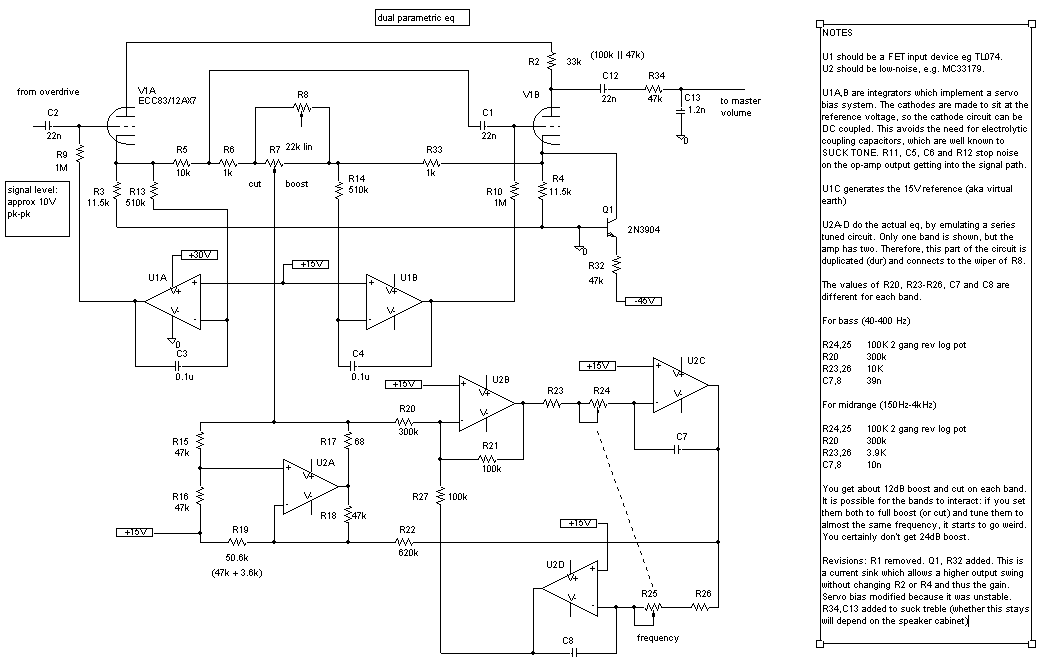
It's vaguely based on an idea in a British ham radio handbook, which showed how to interface low- impedance filters to valve circuitry, by sandwiching them between a cathode follower and a grounded-grid stage. I'm basically doing the same thing here. Imagine two series LC circuits connected to R7 and R8 wipers. Moving the wiper to the left causes V1B's grid drive to be bypassed to ground at the resonance frequency, decreasing the gain. Moving it to the right, V1B's cathode is bypassed to ground, increasing the gain.
Instead of a real tuned circuit, though, I have used four op-amps to simulate one. This allows me to sweep the resonant frequency over a wide range, and fiddle with the Q. This part of the circuit is based around a state-variable bandpass filter, and it's a bit difficult to explain how it works (trust me - it does work) The diagram only shows the circuitry for one band, it should be duplicated for the other one (and connected to R8 wiper) To tune the Q to your own taste: increasing R20 increases it. I suggest you start with the value I used. Bear in mind it doesn't have a constant-Q characteristic: as you increase the boost/cut, the Q increases too.
Q1 is a current sink which I added to change the DC plate voltage of V1B without altering the AC gain. This buys 6dB more headroom, so you can supply a larger input for better signal/noise ratio. Leaving it out will cause V1B to clip more as you turn the boost up - you might think this sounds nice.
U1A,B are integrators which provide servo bias. They force V1A,B cathodes to sit at exactly 15V, allowing me to DC couple all the low-impedance op-amp circuitry. This is good, because it avoids using large electrolytic coupling capacitors, known for (a) sucking tone and (b) drying out over time, thus sucking even more tone. BUT...
I figured out how to change the circuitry around V1B plate so that I could leave out Q1. It's just a case of using two 68k plate resistors, one straight from the plate to B+, the other AC coupled via a large (0.1uF) capacitor. Thus, the AC load resistance will be half the DC resistance. Same effect as Q1 but less components. If I substitute the AC coupled resistor for a tone control like the 'buzz' one, presto! adjustable tone sucking! I haven't tried this yet though.
The circuit passes signals right down to 10 Hz. This isn't a problem in the Toaster, because the coupling capacitors in the overdrive section are tiny. Another set of small caps would take out too much bass. Besides, this allows the super clean channel to have a great LF response, and what a coincidence! I play the bass too!
